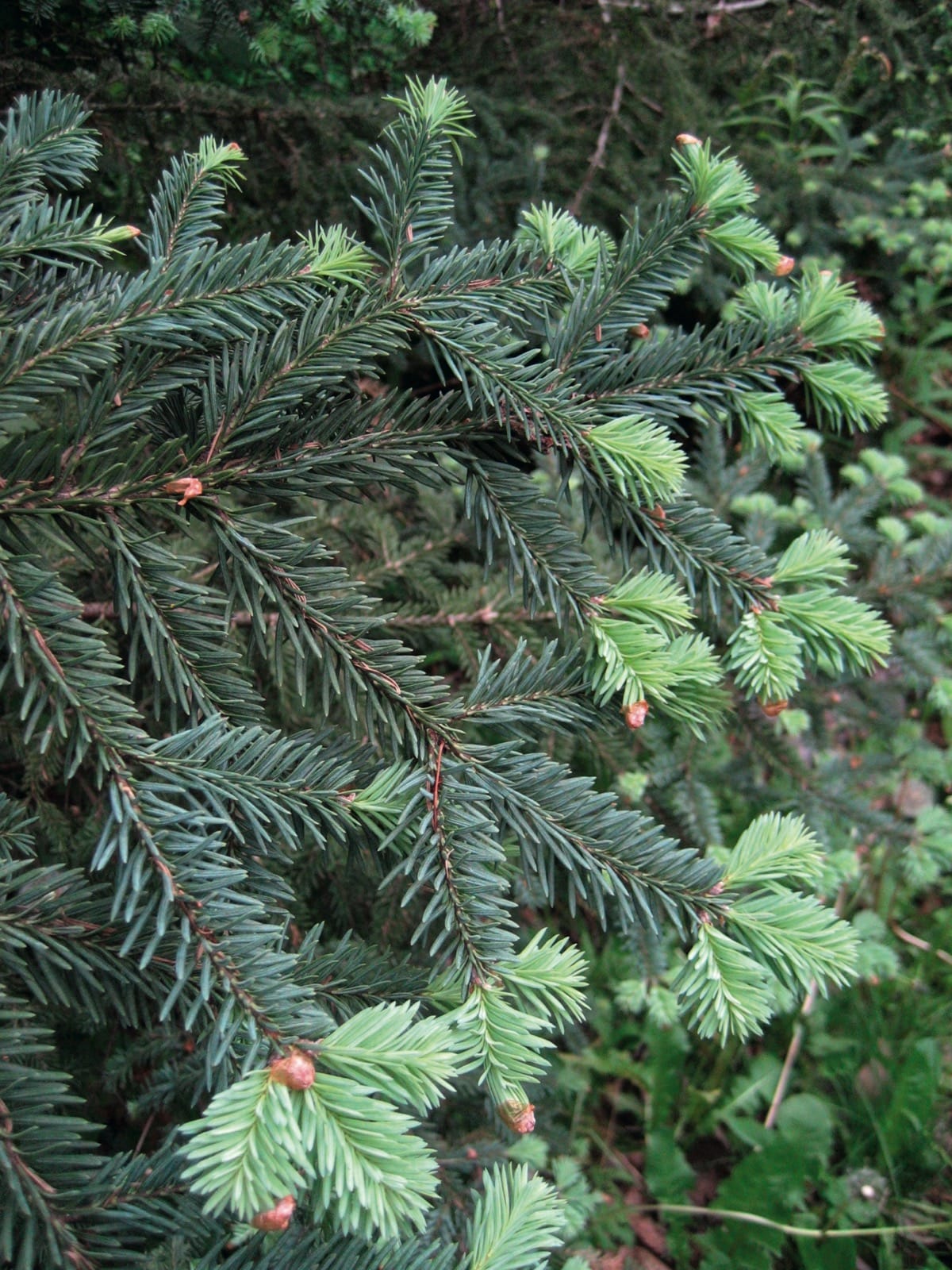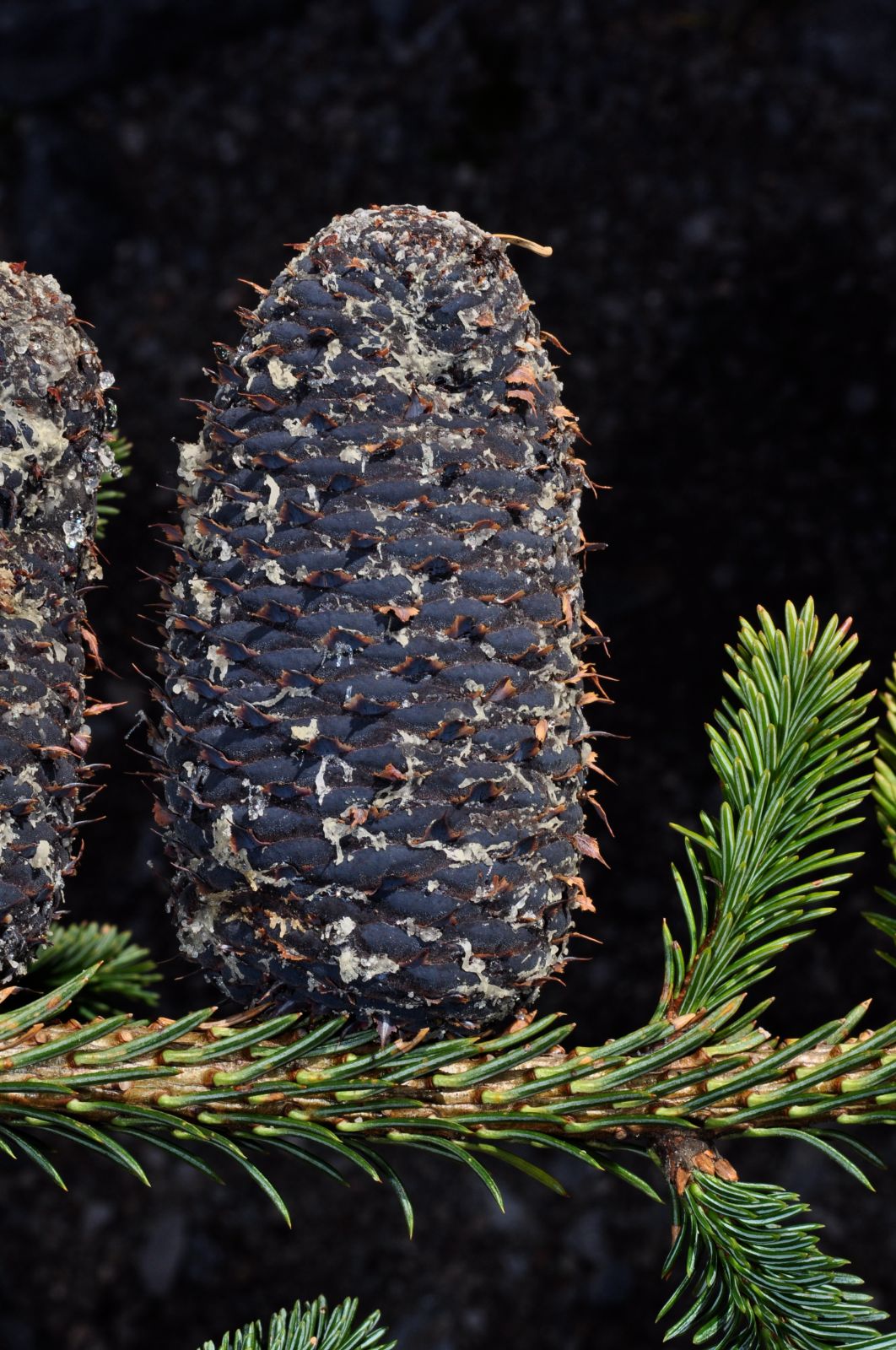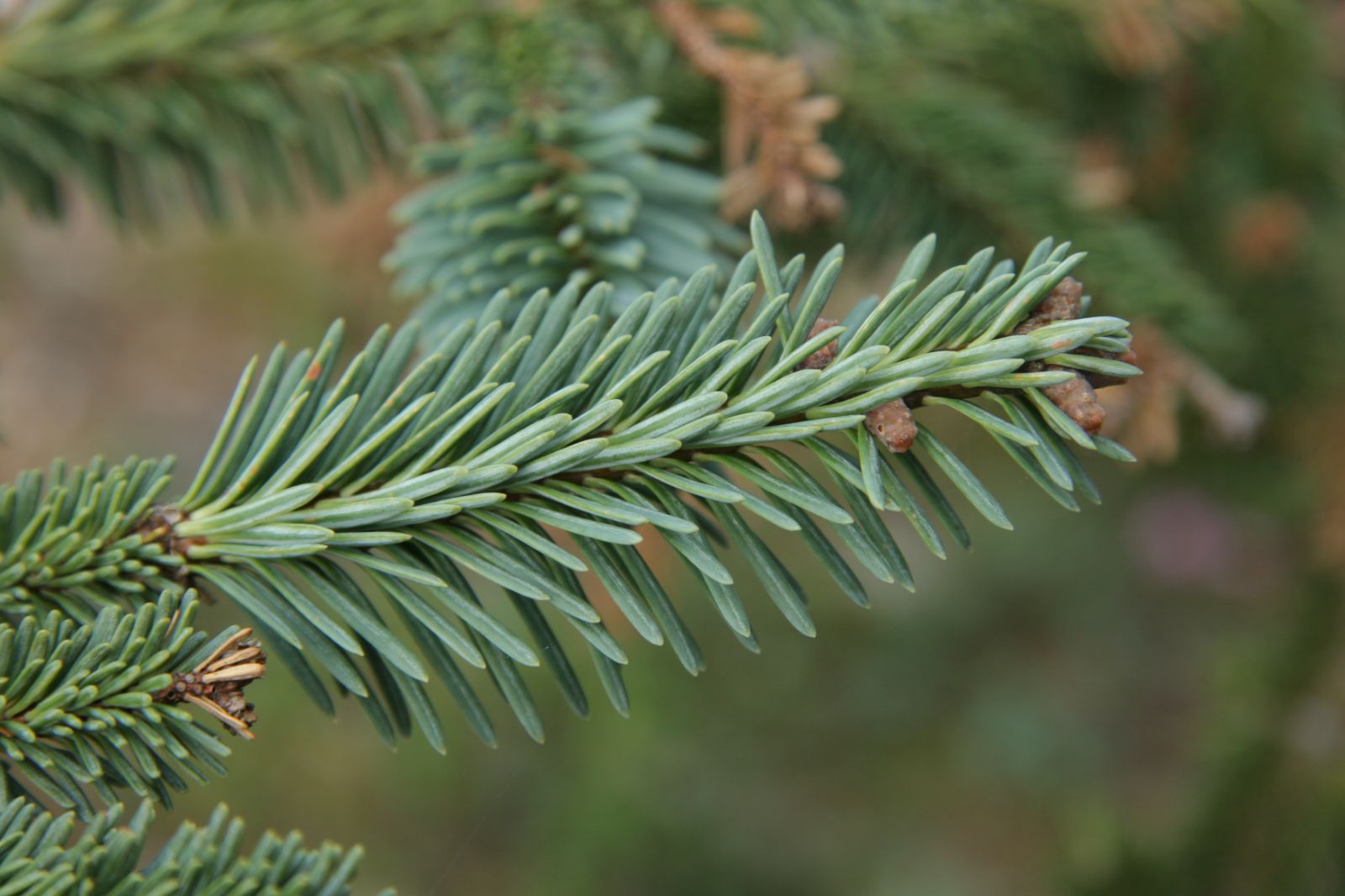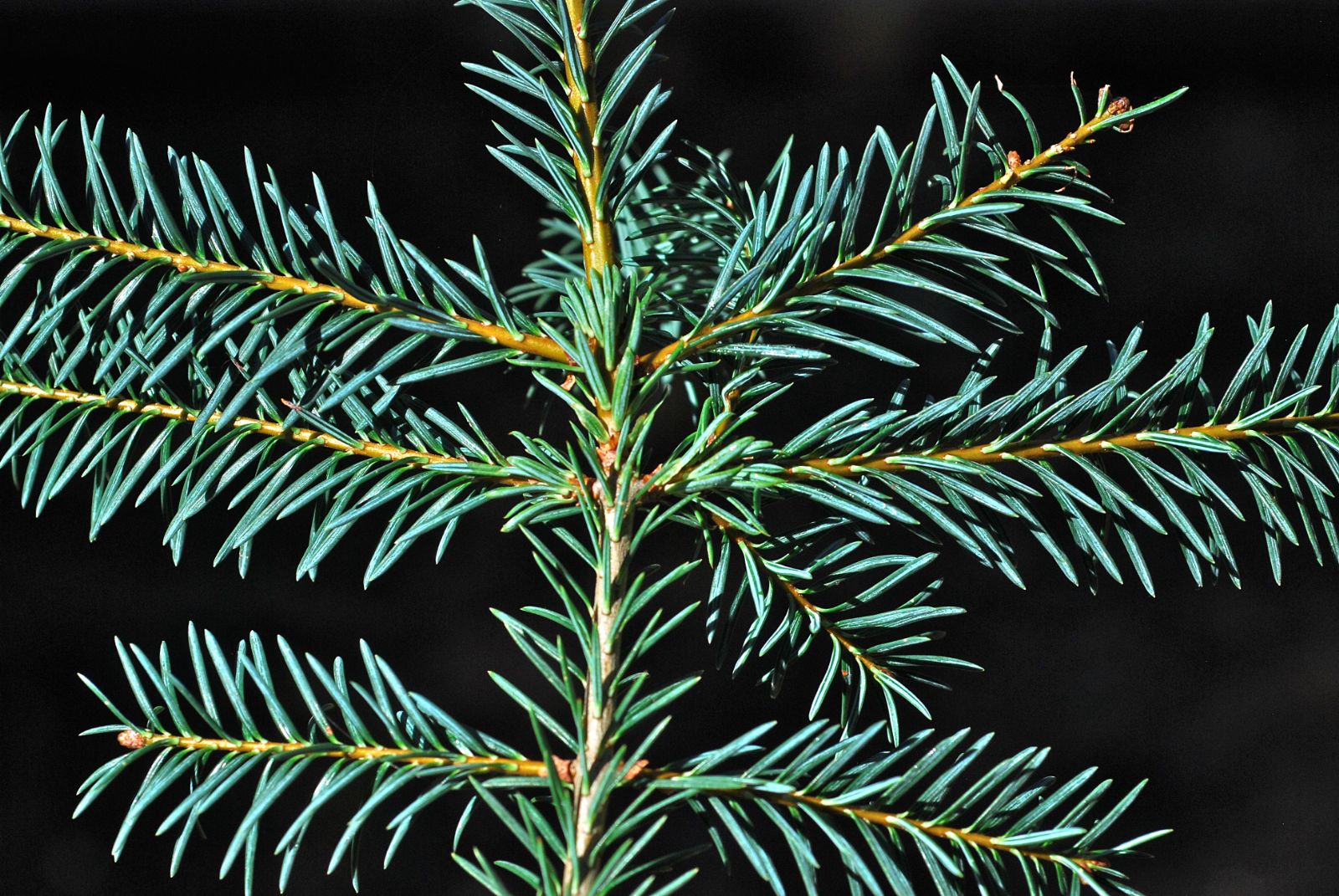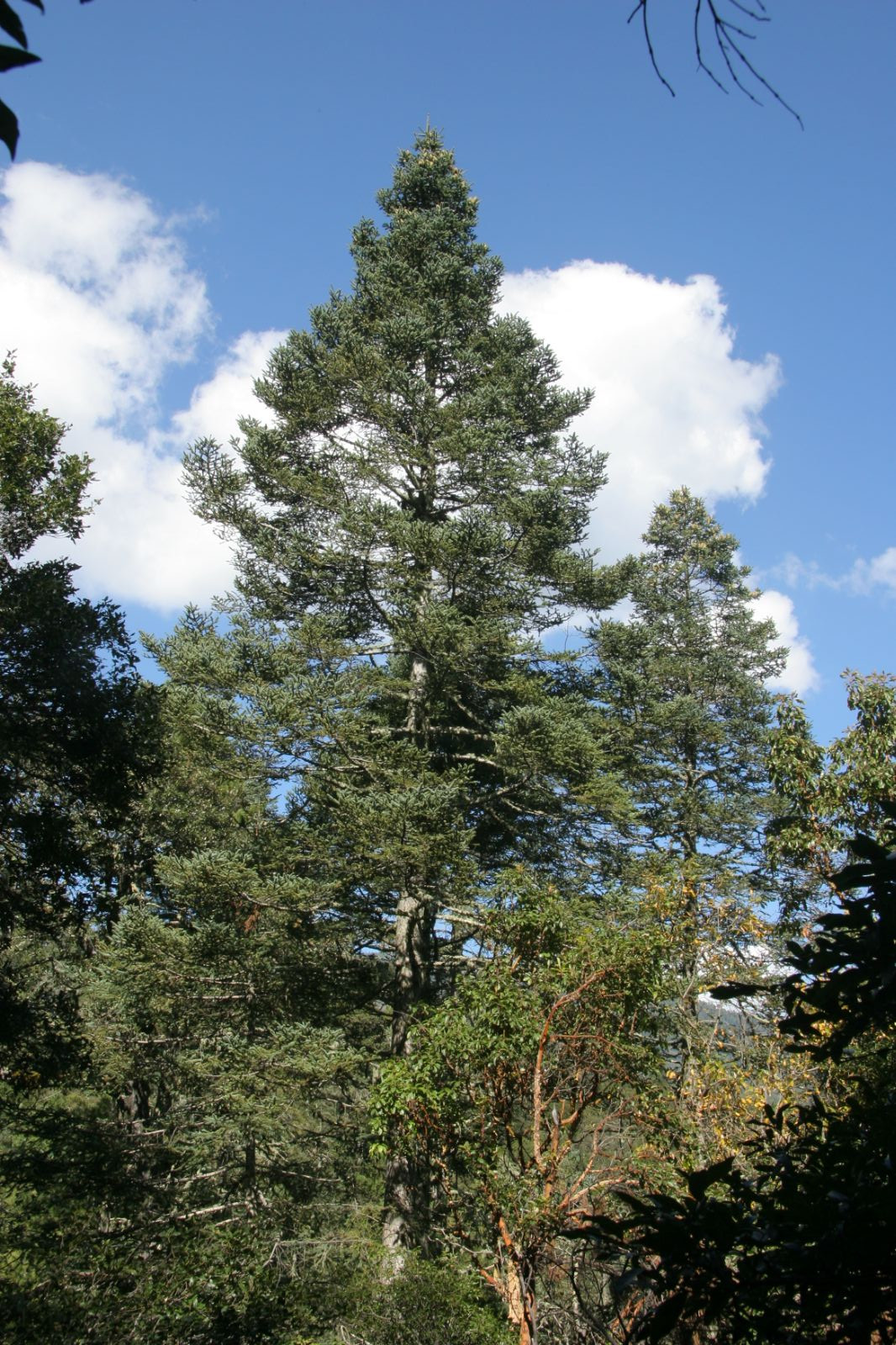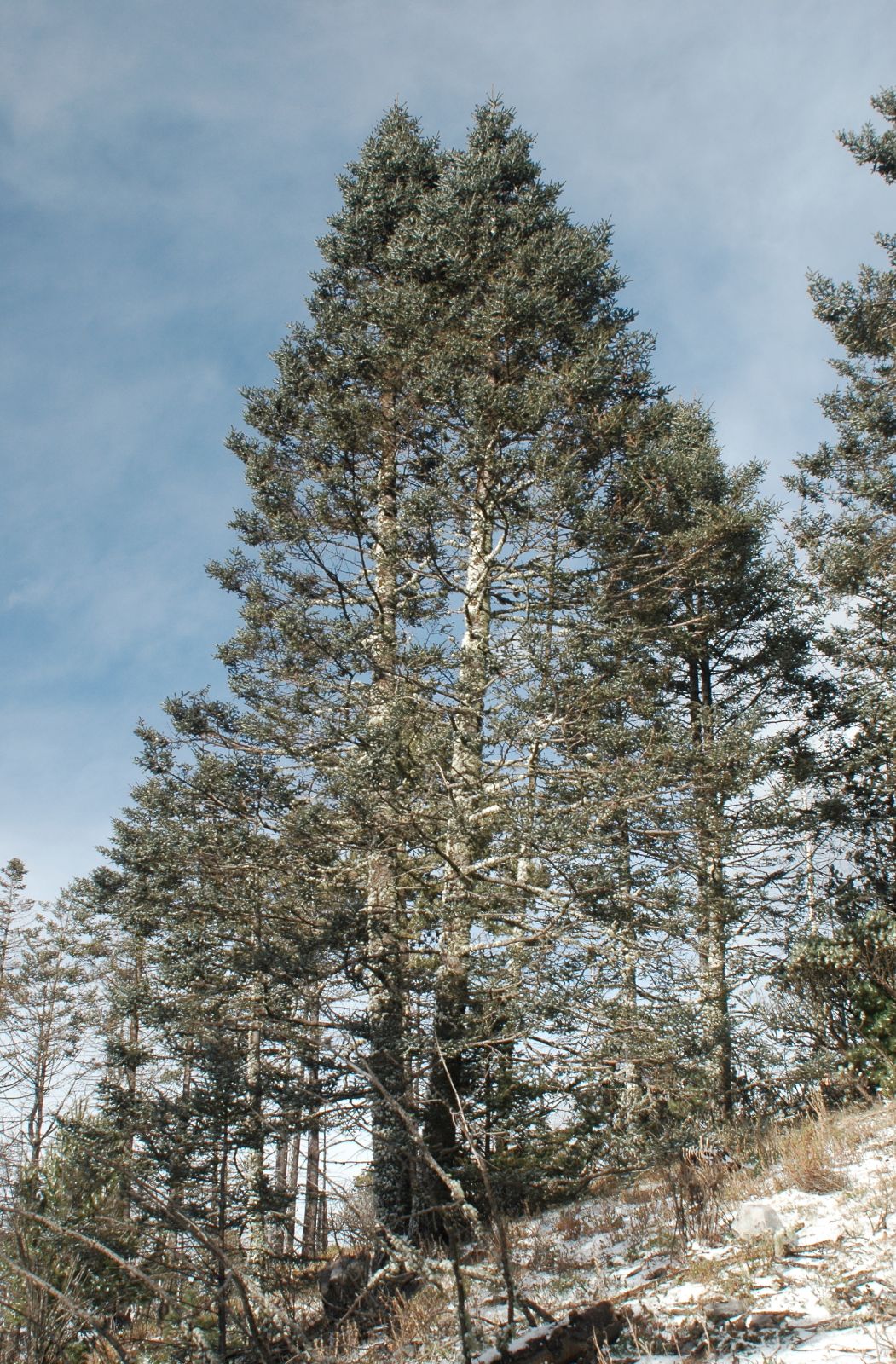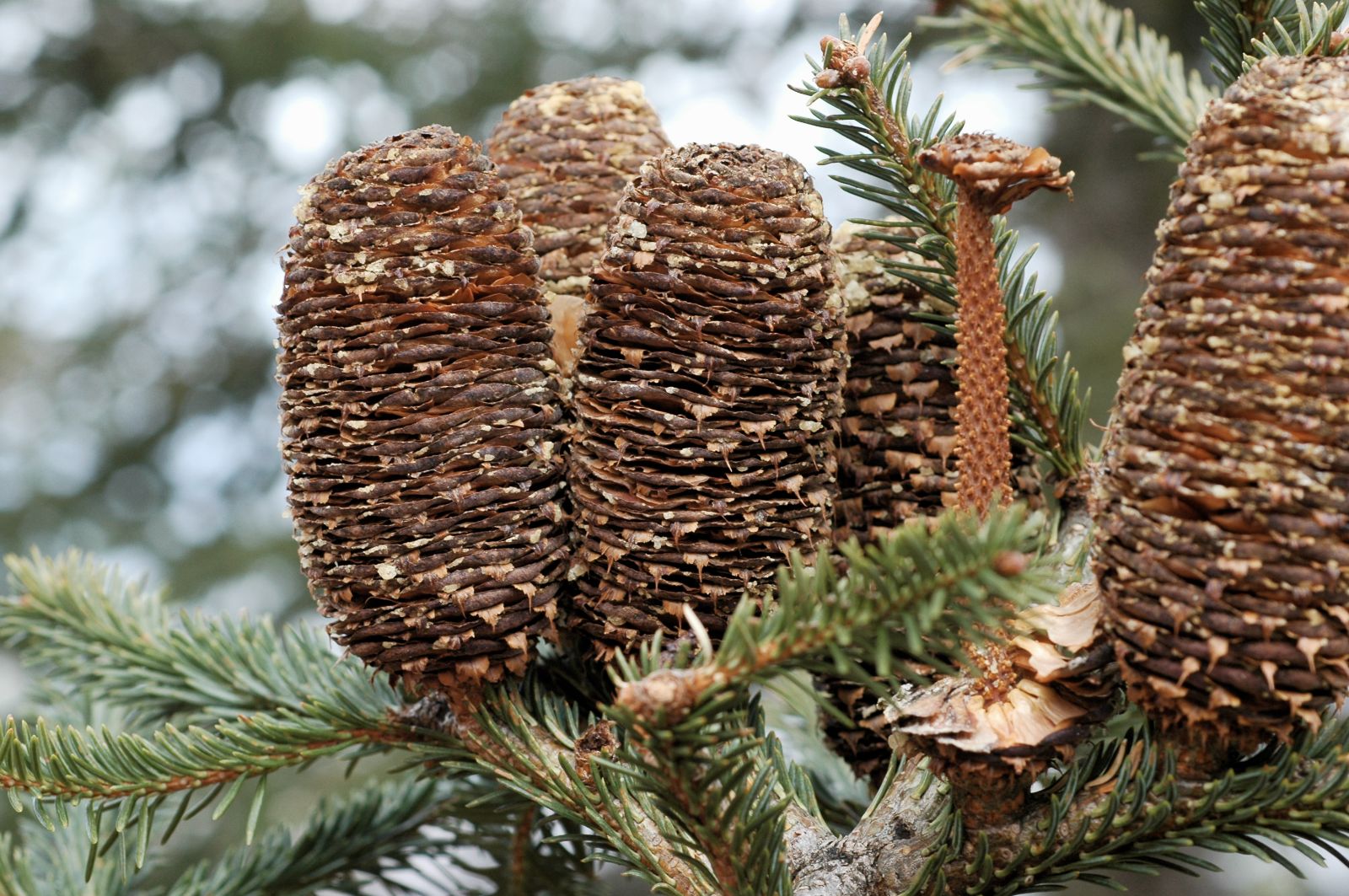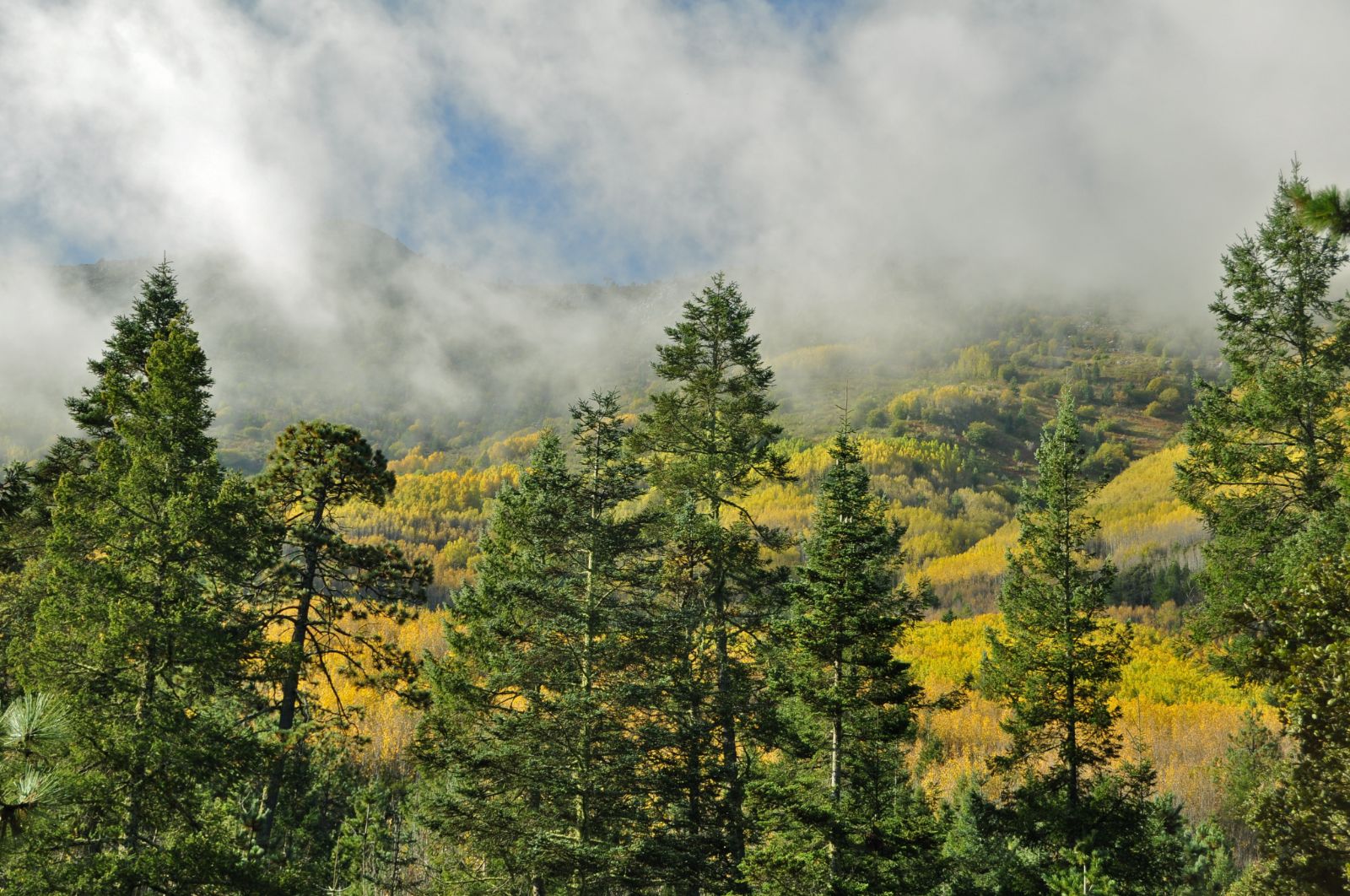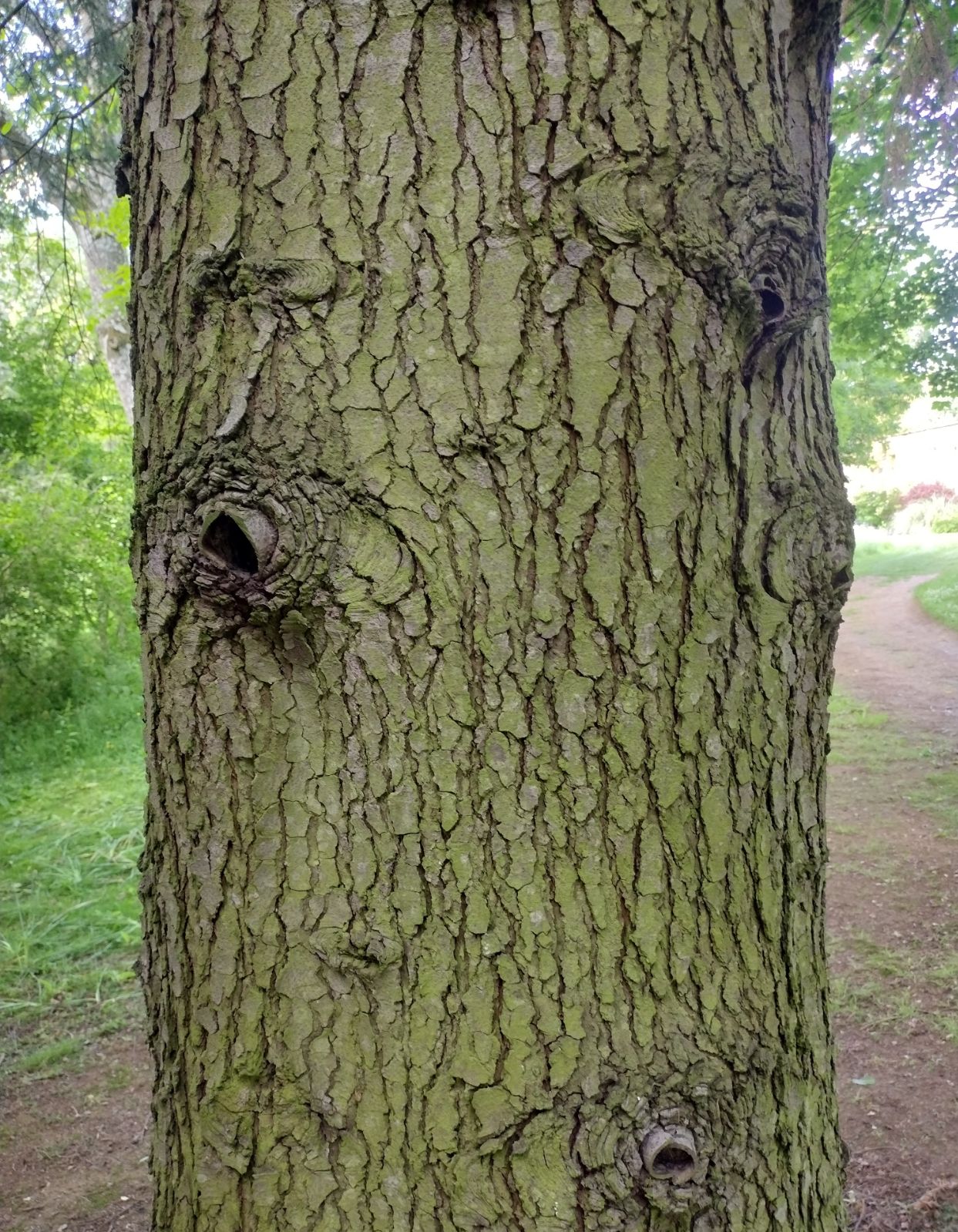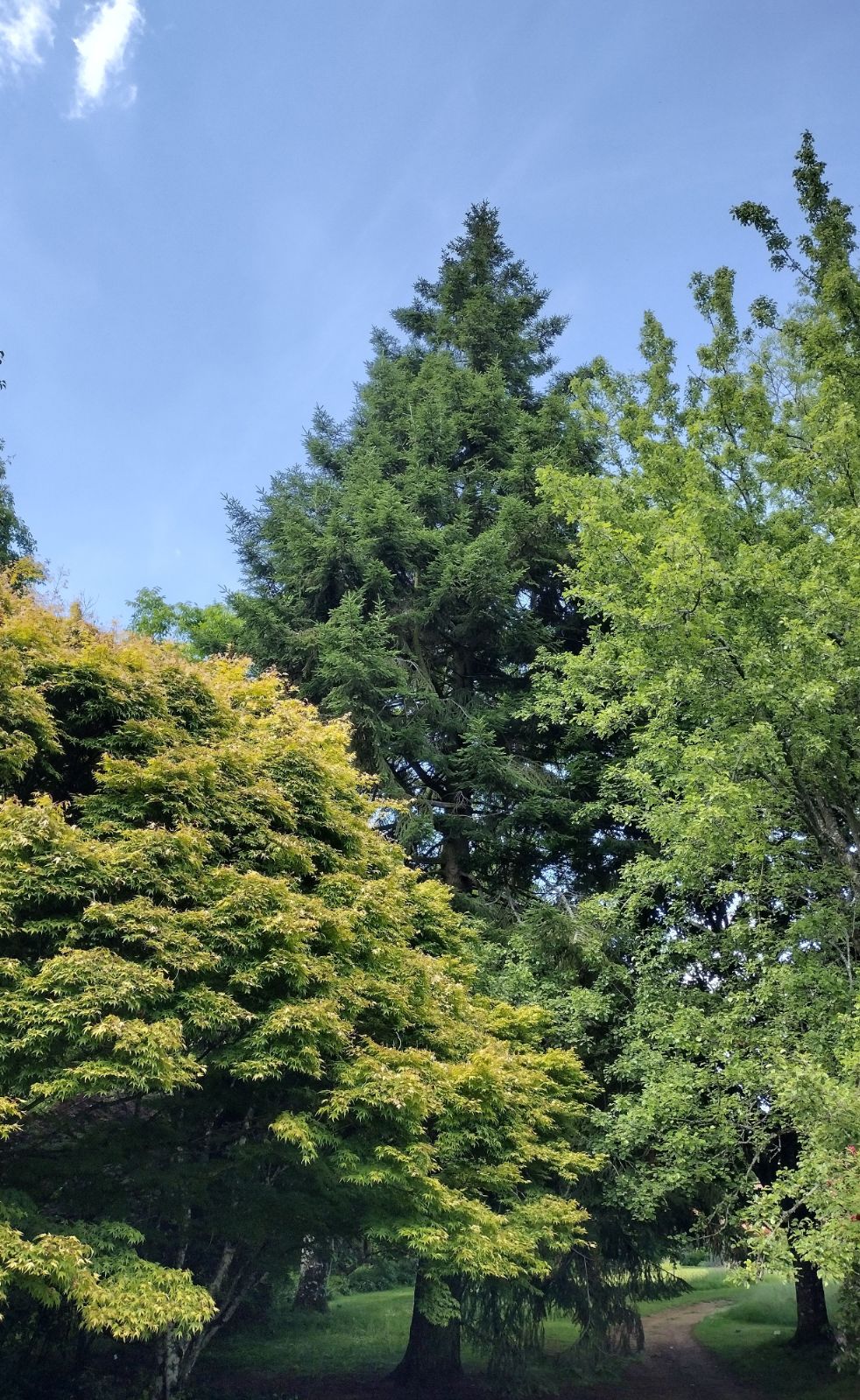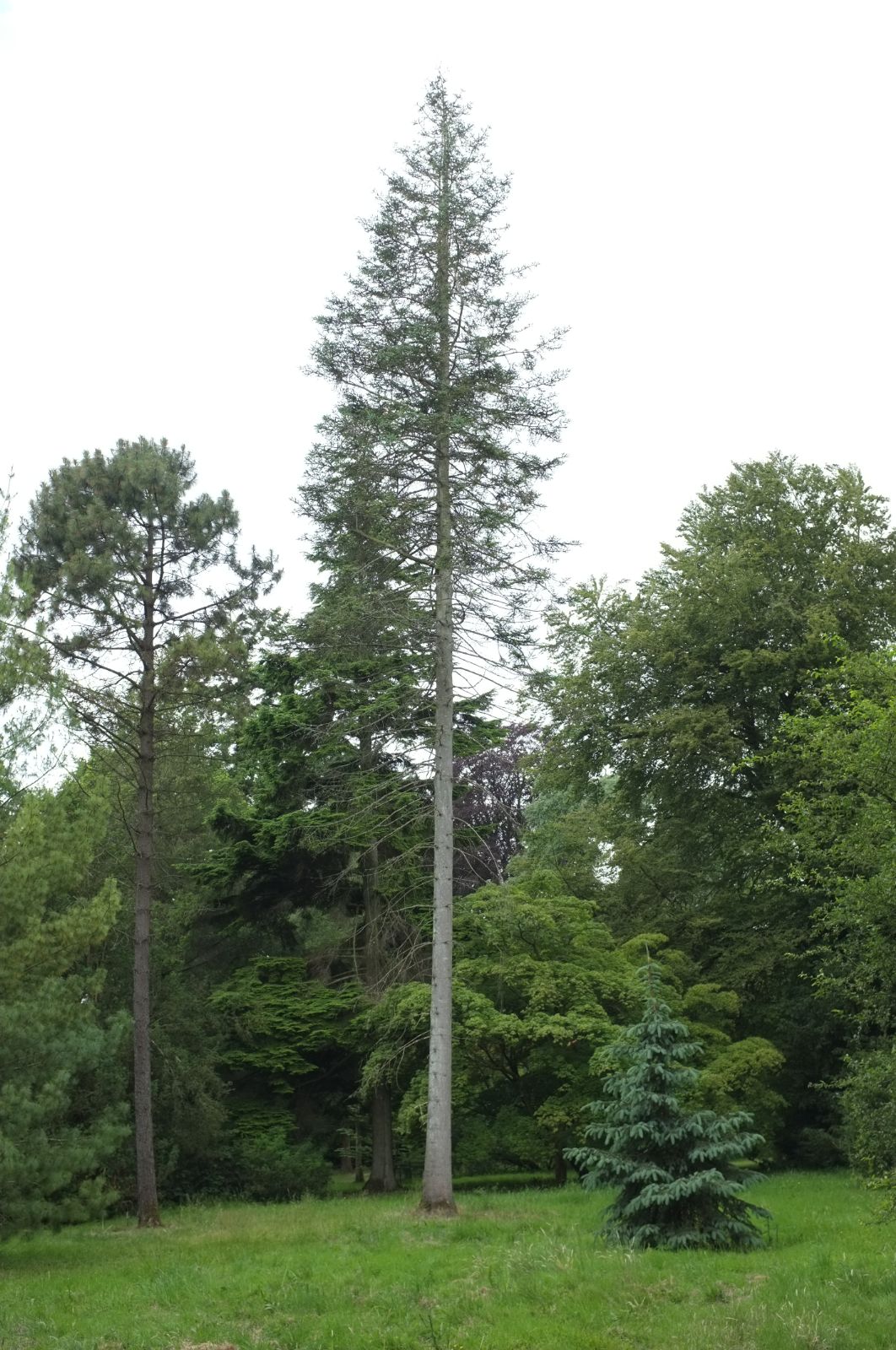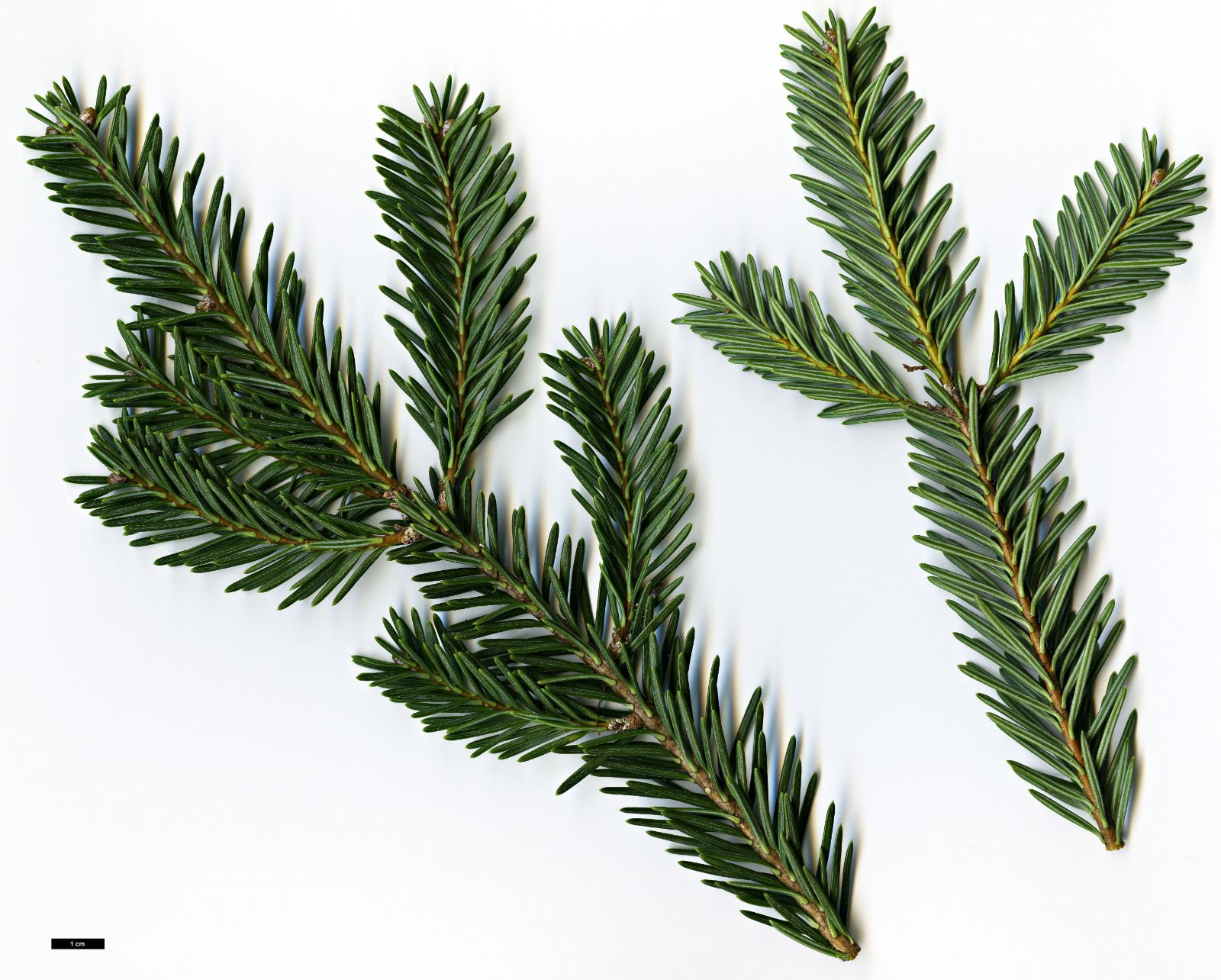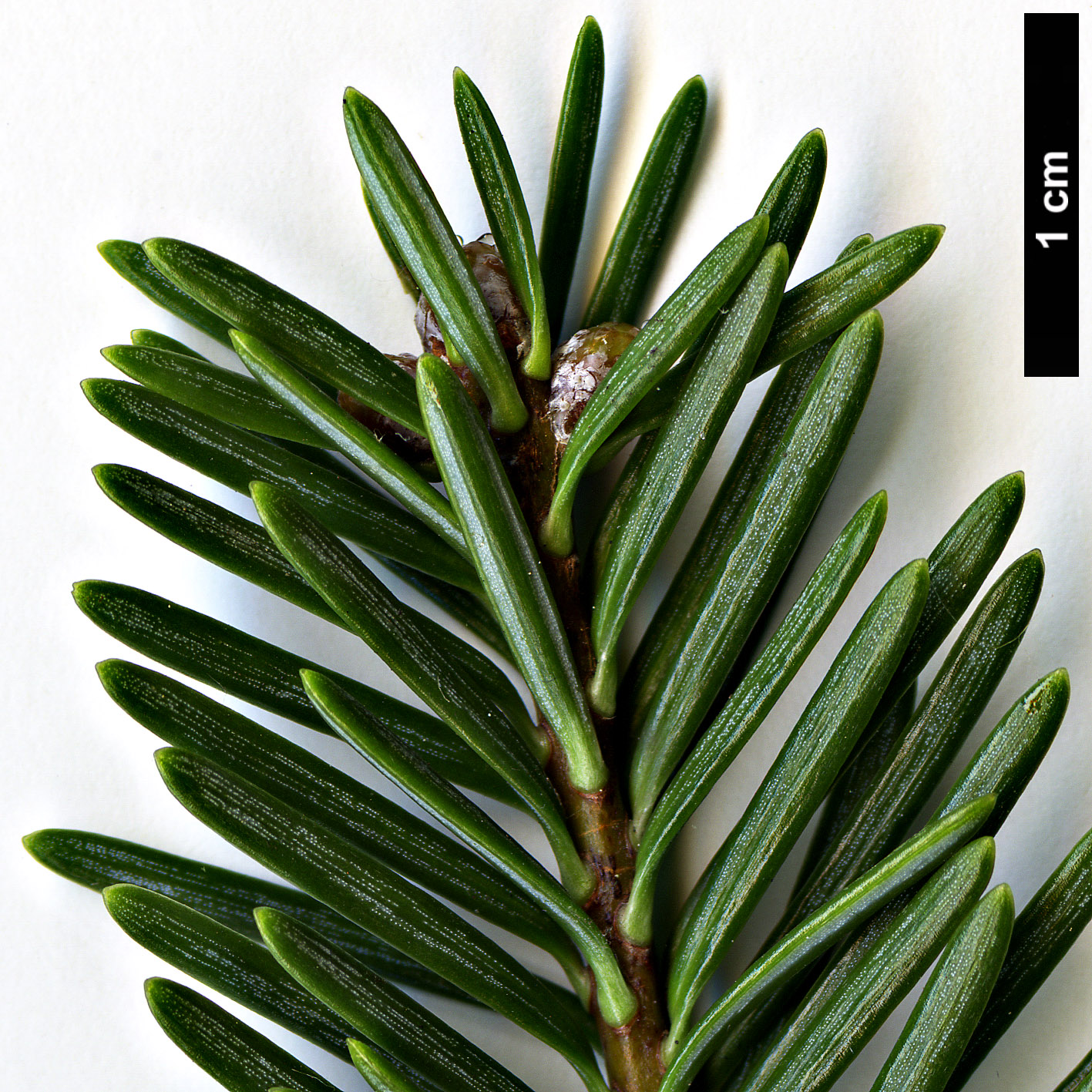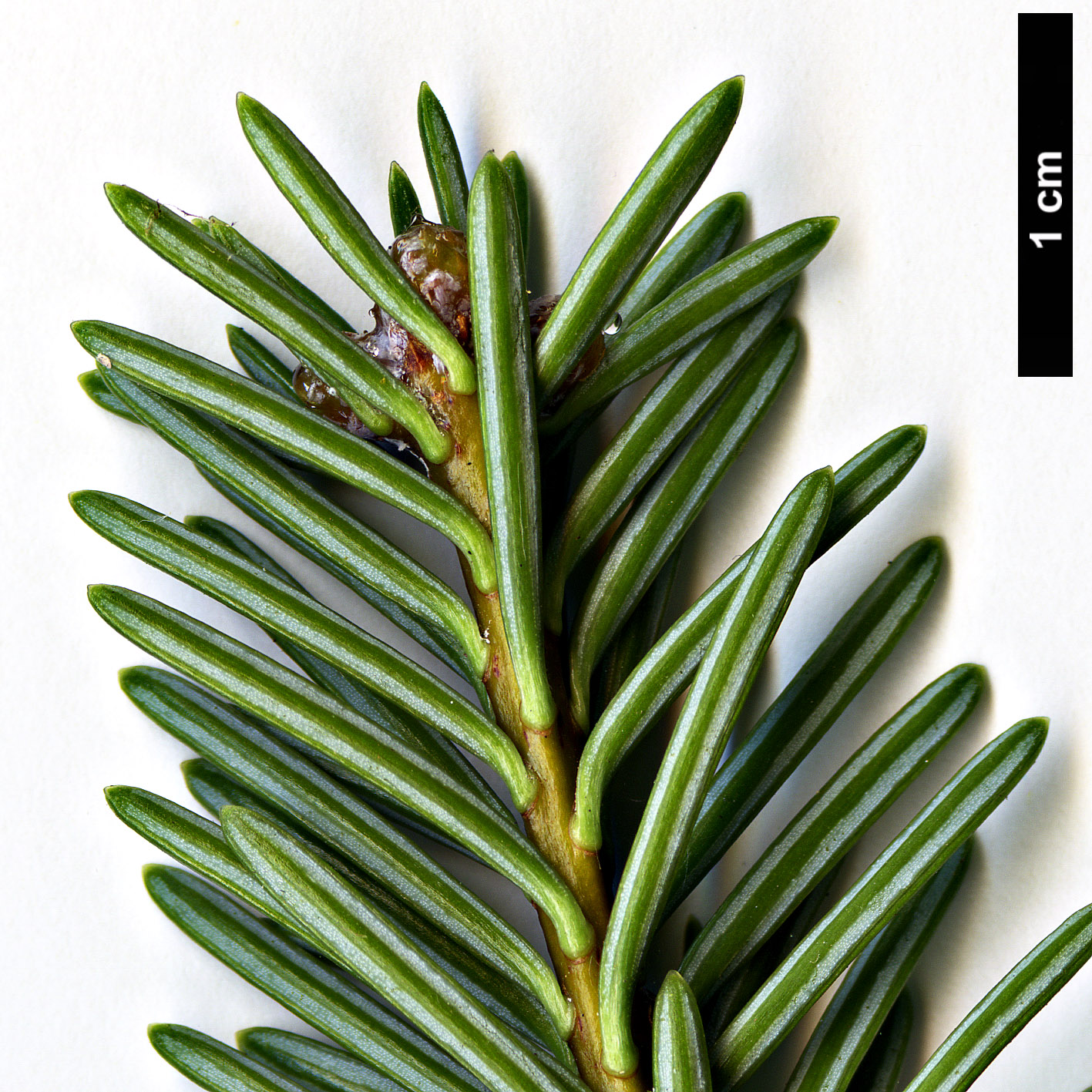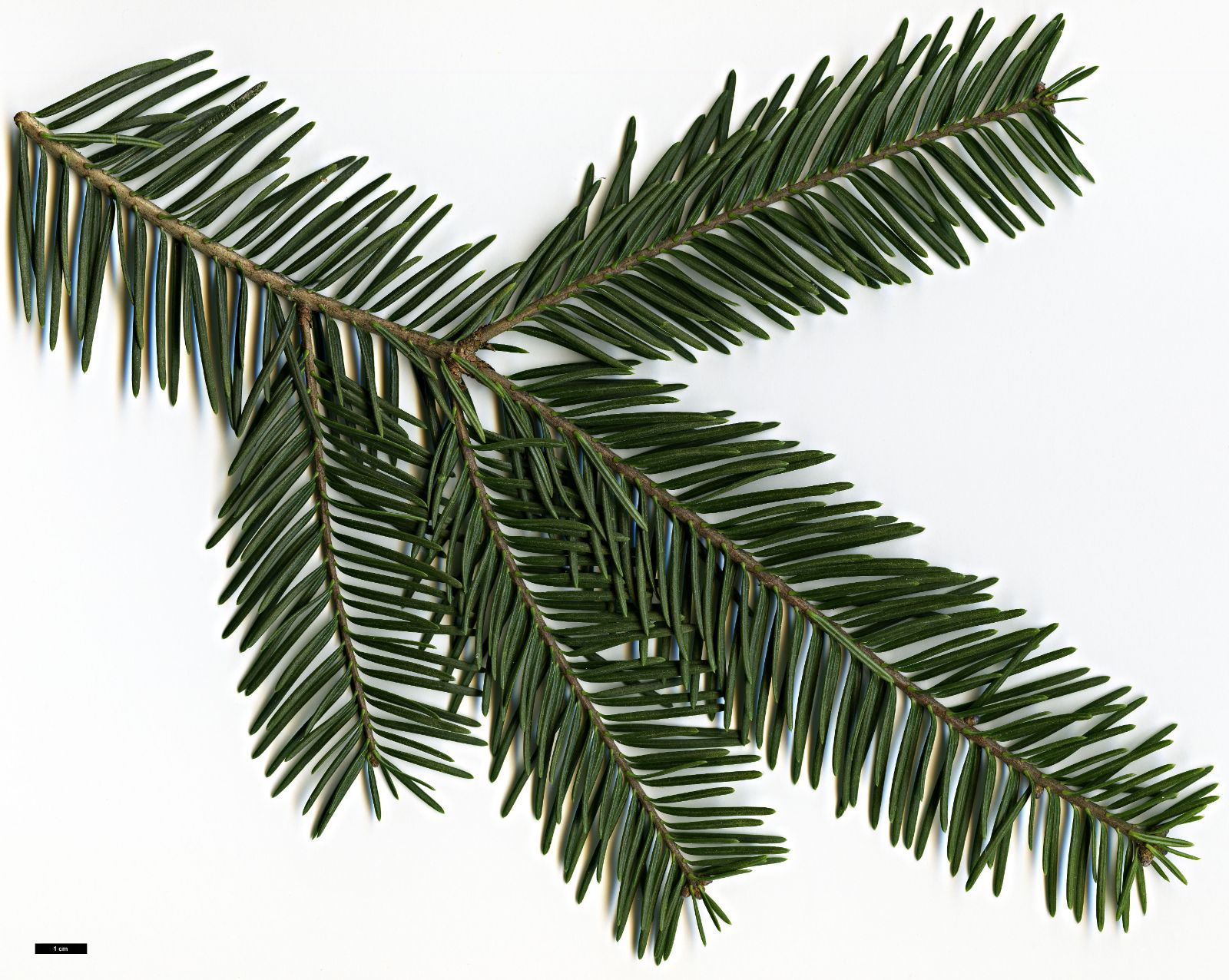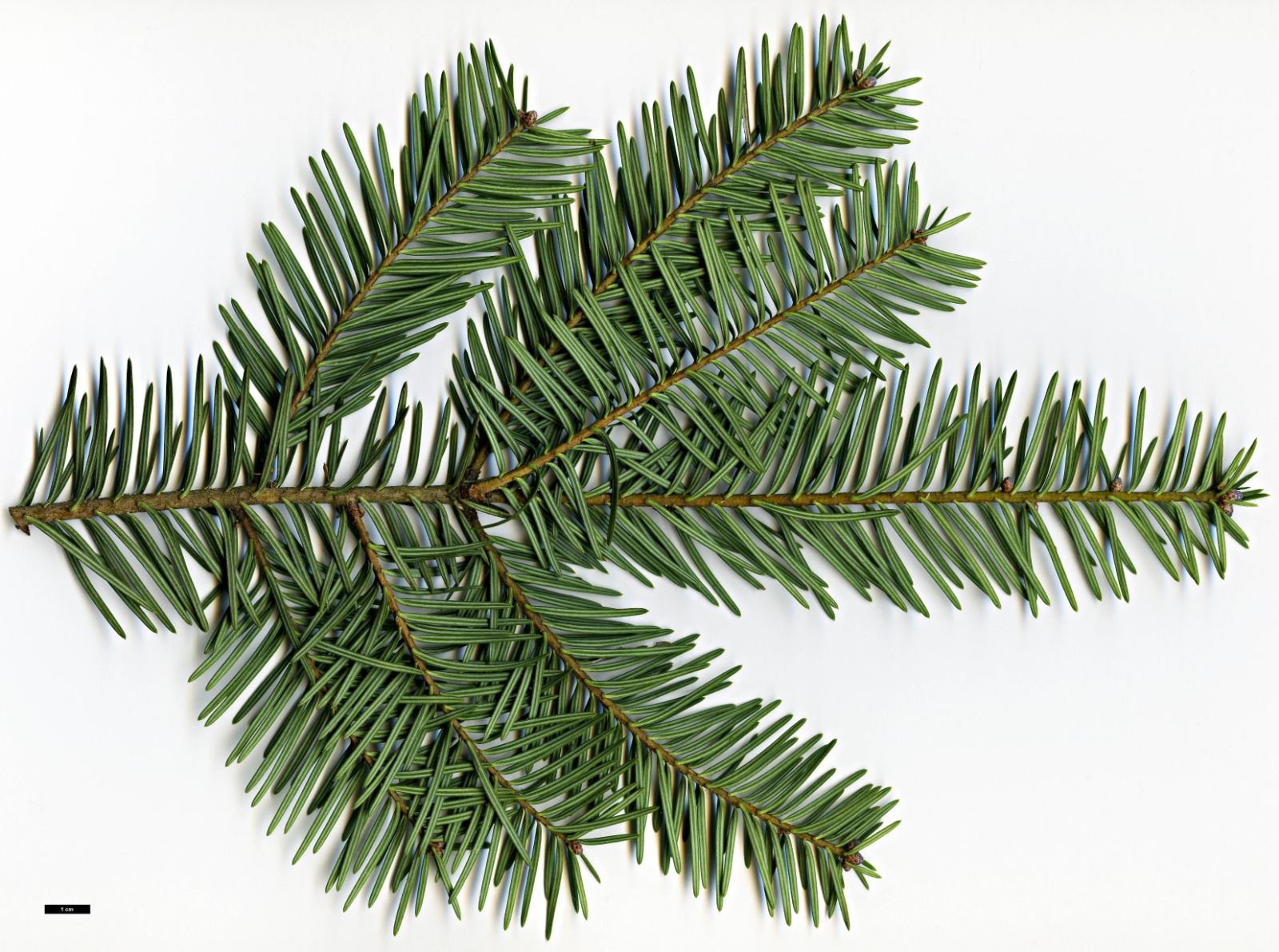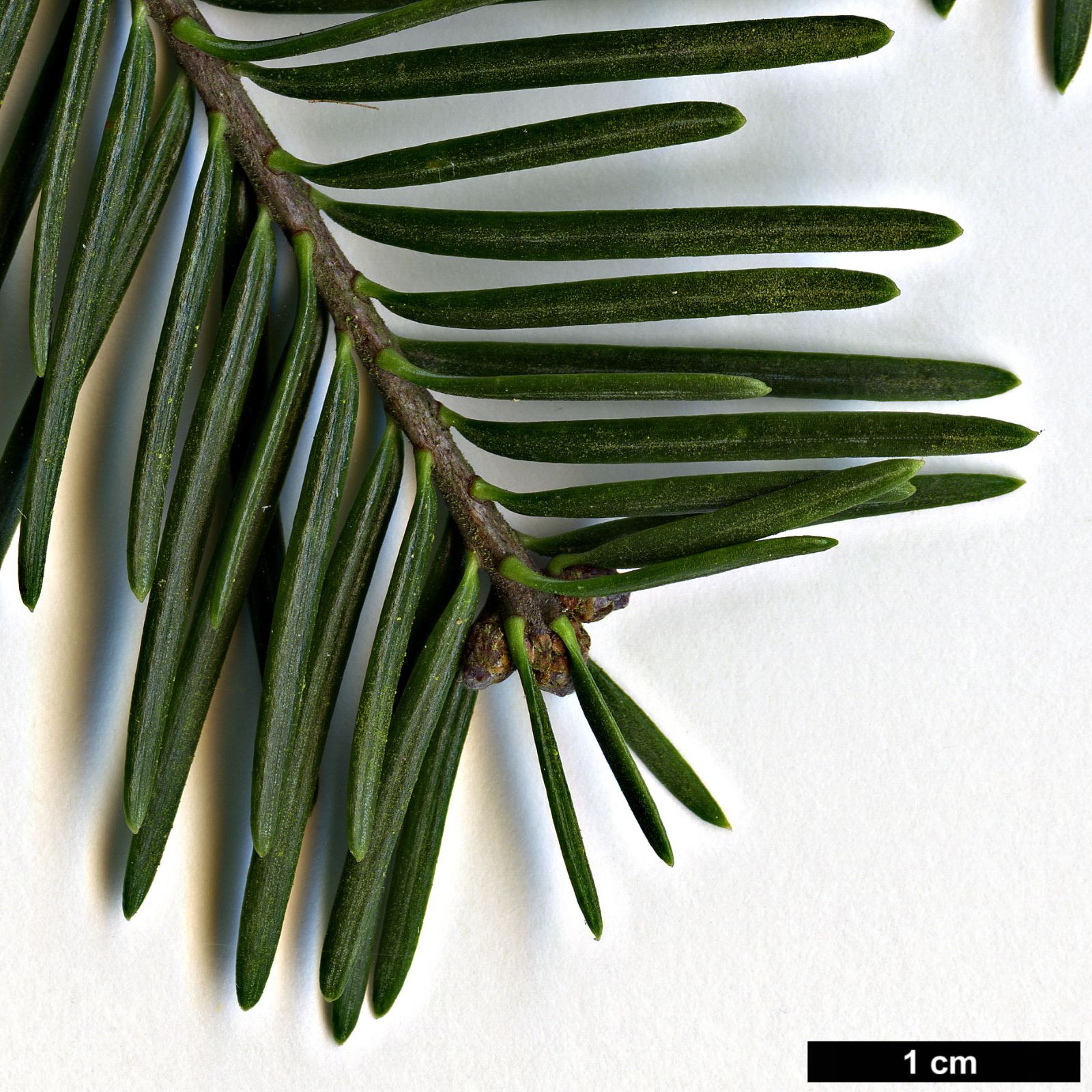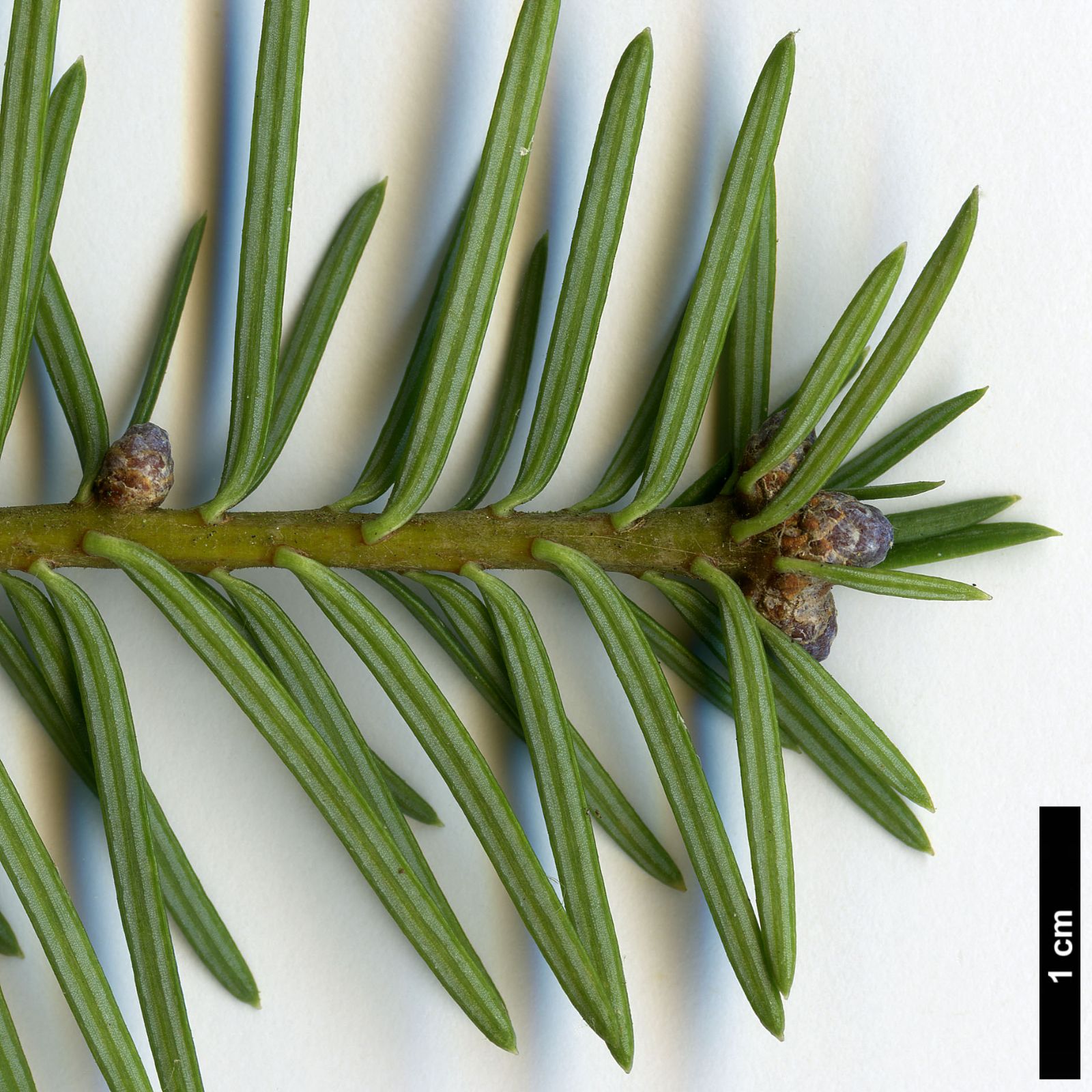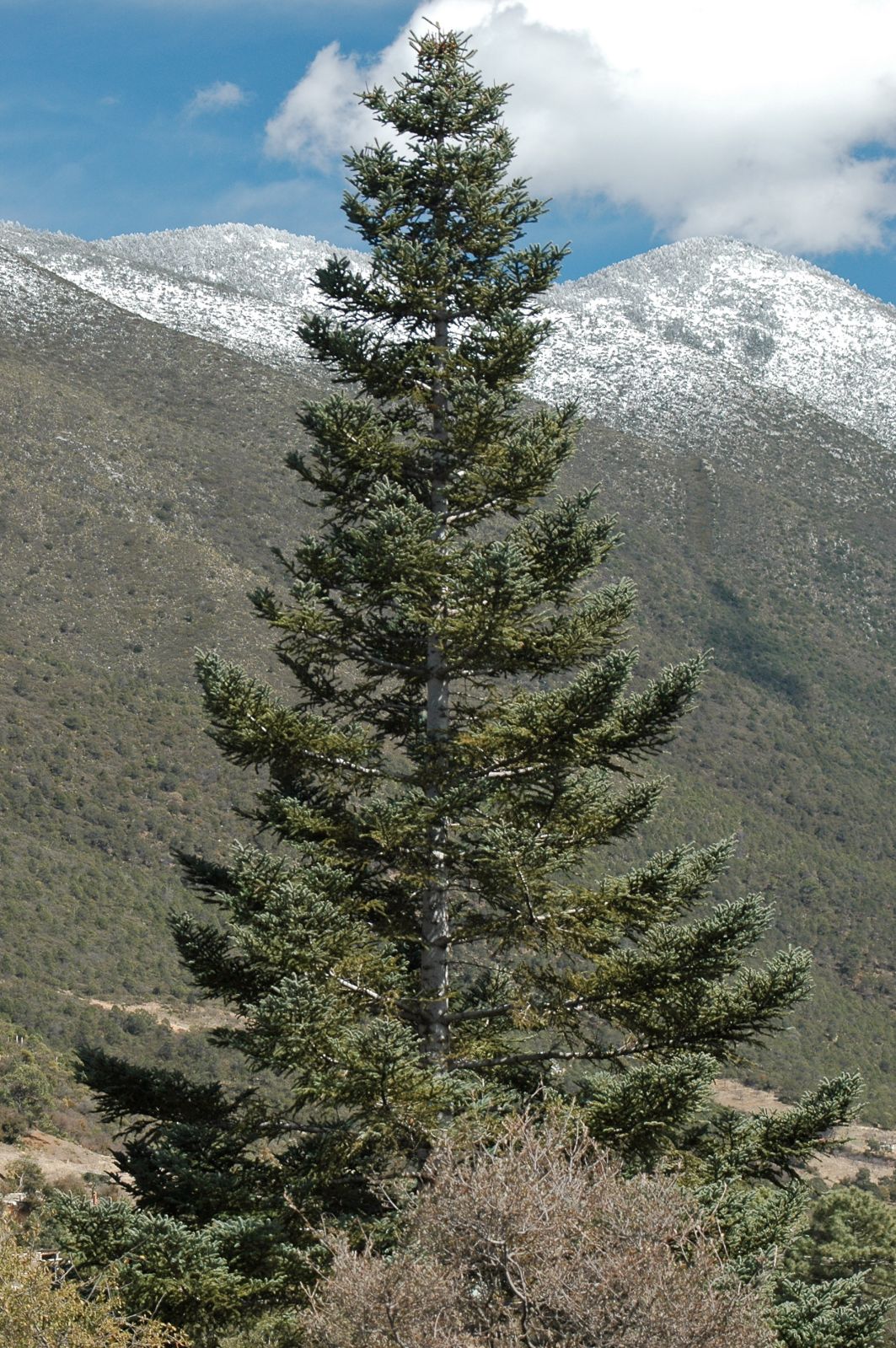Abies vejarii
Sponsor
Kindly sponsored by
Sir Henry Angest
Credits
Tom Christian (2021)
Recommended citation
Christian, T. (2021), 'Abies vejarii' from the website Trees and Shrubs Online (treesandshrubsonline.
Infraspecifics
Other taxa in genus
- Abies alba
- Abies amabilis
- Abies × arnoldiana
- Abies balsamea
- Abies beshanzuensis
- Abies borisii-regis
- Abies bracteata
- Abies cephalonica
- Abies × chengii
- Abies chensiensis
- Abies cilicica
- Abies colimensis
- Abies concolor
- Abies delavayi
- Abies densa
- Abies durangensis
- Abies ernestii
- Abies fabri
- Abies fanjingshanensis
- Abies fansipanensis
- Abies fargesii
- Abies ferreana
- Abies firma
- Abies flinckii
- Abies fordei
- Abies forrestii
- Abies forrestii agg. × homolepis
- Abies fraseri
- Abies gamblei
- Abies georgei
- Abies gracilis
- Abies grandis
- Abies guatemalensis
- Abies hickelii
- Abies holophylla
- Abies homolepis
- Abies in Mexico and Mesoamerica
- Abies in the Sino-Himalaya
- Abies × insignis
- Abies kawakamii
- Abies koreana
- Abies koreana Hybrids
- Abies lasiocarpa
- Abies magnifica
- Abies mariesii
- Abies nebrodensis
- Abies nephrolepis
- Abies nordmanniana
- Abies nukiangensis
- Abies numidica
- Abies pindrow
- Abies pinsapo
- Abies procera
- Abies recurvata
- Abies religiosa
- Abies sachalinensis
- Abies salouenensis
- Abies sibirica
- Abies spectabilis
- Abies squamata
- Abies × umbellata
- Abies veitchii
- Abies × vilmorinii
- Abies yuanbaoshanensis
- Abies ziyuanensis
Tree to 40 m, to 1 m dbh. Crown narrow conical-columnar, sparse in old trees. Bark smooth, thin, and grey for many years, becoming grey-brown, rough, longitudinally fissured with irregular, thick plates. First order branches slender, spreading horizontally. Branchlets slender, firm, smooth or shallowly grooved, greenish-yellow at first, soon maturing reddish- or purplish-brown, becoming reddish or orange-brown with age, glabrous, or puberulent at first, later glabrous. Vegetative buds globose, 3 × 2.5 mm, very resinous. Leaves glaucous-green and stomatiferous on both surfaces, appearing darker green above, 1–2 cm × 1–2 mm, slightly grooved, apex acute, base not twisted or curved. Pollen cones crowded, ~0.5 cm, almost globular, yellowish with reddish microsporophylls. Seed cones short-pedunculate, cylindrical-ovoid or barrel-shaped, apex obtuse or truncate, 6–12(–15) × 4–6 cm, dark purplish when immature, pruinose-purple or -blue later, pruinose-brown at maturity; seed scales cuneate-flabellate, 1.5–2 cm long at midcone; bracts somewhat exserted to prominently exserted and reflexed. (Farjon 2017; Debreczy & Rácz 2011).
Distribution Mexico Coahuila, Nuevo León, Querétaro, Tamaulipas, Veracruz
Habitat Forests on steep mountain slopes from 2200–3300 m asl, characterised by warm summers and cool, wet winters. At its lower altitudinal limit it occurs in the oak-pine zone with species such as Pinus cembroides, P. estevezii, P. greggii and Pseudotsuga menziesii var. glauca. Higher up its associates include Pinus hartwegii and P. strobiformis.
USDA Hardiness Zone 6
RHS Hardiness Rating H6
Conservation status Vulnerable (VU)
Taxonomic note Martínez published a variety, var. macrocarpa, in 1949, based on trees growing in the northern part of the species’ range. He distinguished it based on larger seed cones (10–15 cm long cf. 6–12 cm) with partially exserted bracts, branchlets puberulent at first (cf. glabrous), and (in some examples) more glaucous leaves (Farjon 2017; Debreczy & Rácz 2011); but there is clearly some overlap in so-called distinguishing characters. Rushforth considers this ‘part of the natural variation’ of the species and notes ‘[A. vejarii] is very variable in the colour of the foliage; adjacent trees may be grey-green or bright glaucous blue’ (Rushforth 1987); var. macrocarpa is included in synonymy here.
In some parts of our area Abies vejarii is probably the most commonly grown of the Mexican-Mesoamerican firs, thanks to a relatively high frequency of introductions. Described by Martínez in 1942 – who named it for Mexican Minister for Public Education Octavio Véjar Vázquez (Jacobson 1996) – this species comes from north east Mexico in the mountains of Coahuila, Nuevo León, and Tamaulipas states. It is unusual in the genus for having straight needle bases; not curved or twisted like in so many firs. Together with their short length, acute tips, and stomatal bands on both sides, the foliage renders this quite a distinctive species (pers. obs.). Like many Mexican trees it was first introduced to Britain in the 1960s, at a time when the Forestry Commission here was probably at its most experimental with regard to novel species. Bean (1976) gives 1964 for A. vejarii’s arrival, but Alan Mitchell said 1962 and added ‘plants [were] sent to several estates in South West England in 1965 and planted in small trials, and at Bedgebury and Westonbirt’ (Mitchell 1972). It arrived in North American collections at about the same time (Jacobson 1996).
The fate of these early plantings is largely unknown, but an original tree grew at Westonbirt until it had to be felled in 2015. The previous year it had been a ‘slender, spire shaped tree still growing fast’, 31 m × 0.53 m dbh (Tree Register 2021). Another original at Bedgebury was 19 m × 0.4 m dbh in 2015 but has since been removed due to infection with Neonectria canker (D. Luscombe pers. comm. 2021). A more recent introduction, KR 515, collected in 1984 and planted at Thenford House, Northamptonshire, in 1986, was ‘approximately 20 m (43 cm dbh) by 2006’ (Grimshaw & Bayton 2009) and 25 m × 64 cm dbh in 2019; it is now the largest known (Tree Register 2021). This impressive growth rate seems to be typical of the species both in the UK and Ireland and in appropriate zones in North America (Grimshaw & Bayton 2009), although a thriving example at Kew reported in New Trees, also from KR 515, had gone by 2020 (pers. obs.). Michael Frankis collected A. vejarii from 3180 m on Cerro Potosí in 1991 (Frankis 151) and plants descended from this collection grow at the Sir Harold Hillier Gardens and Tregrehan (Grimshaw & Bayton 2009).
Many young plants labelled A. vejarii have been planted in UK and Irish collections in recent years, ultimately traceable to Bedgebury National Pinetum. Some were distributed directly from Bedgebury; many others went via the National Trust’s Plant Conservation Centre. The result is a broad distribution of a relatively large number of plants, hence A. vejarii is a frequent sight in collections here in the early 2020s. However, a word of caution is required: all these trees are raised from cultivated seed, obtained from the original trees that grew at Bedgebury until quite recently. Although many appear genuine in youth, it seems highly likely that these will later show themselves to be hybrids. Those young trees that were planted at Bedgebury are already showing the (vegetative) influence of A. grandis (D. Luscombe pers. comm. 2021). Several known fir hybrids appear strongly like one parent in vegetative characters, but like the other in carpological characters (A. × umbellata and A. magnifica × procera are prime examples of this) and the cones of these young trees should be examined carefully when they are finally produced. As ever, the best way to multiply cultivated stock whilst ensuring genetic integrity is to graft known origin trees.
'Mountain Blue'
Selected at the Buchholz & Buchholz nursery in Oregon in 1984, A. vejarii ‘Mountain Blue’ is a selection of typical habit but with rather short, very blue leaves. It can reach 2.5 × 1.2 m in ten years (Auders & Spicer 2012)
subsp. mexicana (Martínez) Farjon
Synonyms
Abies mexicana Martínez
Abies vejarii var. mexicana (Martínez) Liu
Seed cones to 6–8(–10) cm long, bracts fully included. (Farjon 2017; Debreczy & Rácz 2011).
Distribution
- Mexico – SE Coahuila, E Nuevo León. Tamaulipas?
As originally described this taxon is very close to A. vejarii, the most significant difference being the fully included bract scales in mature seed cones and the hairy shoot, although descriptions of the latter character vary. Following a visit to Mexico in 1984, however, Rushforth considered this taxon to warrant recognition as a distinct species, A. mexicana. He has observed that it differs (from A. vejarii) ‘in foliage arrangement, cones and bark and also in ecology’ (Rushforth 1987). Recent field observations, though, have produced a new theory. At the time of Rushforth’s visit to the region A. durangensis var. coahuilensis was known only from the Sierra Madera in Coahuila. More recently populations have been discovered in close proximity to A. vejarii, in the Sierra Madre Oriental in Nuevo León, and it has been suggested that Rushforth mistook these trees for those populations of A. vejarii that originally gave rise to the name A. mexicana, thus influencing his opinion as to the validity and status of this taxon (Bisbee 2018). Rushforth himself does not dispute the accuracy of recent reports that A. durangensis var. coahuilensis occurs in the Sierra Madre Oriental, but still considers trees he saw there distinct from this taxon and from A. vejarii – they may represent an unnamed local endemic (K. Rushforth pers. comm. 2021).
Taking this new informaiton into account, and by accepting at least the possibility of mix ups by various persons, we are forced once again to question the identity of material that has found its way into cultivation. The relevant collections were recorded in New Trees: ‘Abies mexicana has a sparse presence in cultivation from collections by Keith Rushforth (KR 479), Jim Priest (JP 109), and Rob Nicholson, Carl Schoenfeld, John Fairey and Mel Shemluck (Nicholson et al. B1), all from 1 km south of San José de la Hoya, near Galeana, Nuevo León and just to the north of Cerro Potosí’ (Grimshaw & Bayton 2009). Certainly the latter locality corresponds closely to a ‘new’ population of A. coahuilensis according to Bisbee (2018), but genuine A. vejarii occurs in the same locality, above the range of A. coahuilensis; further investigations, both of wild populations and of living and preserved collections, will be needed before a concensus of opinion is possible.

